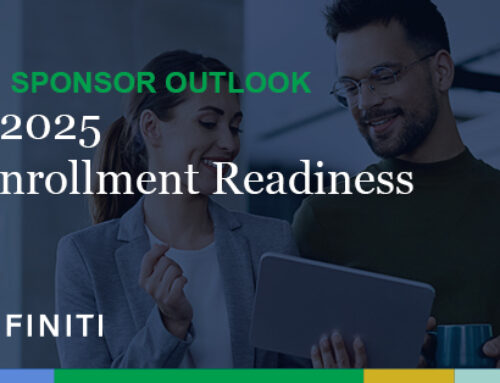Definiti provides valuable insights and guidance through regular Insights articles to help retirement plan sponsors and financial advisors navigate the complex retirement landscape. We keep our Insights readers updated on retirement field developments through this blog and other communication channels and events, like the Definiti Academy educational webinar series.
We reviewed our recent Insights articles to see which ones garnered the most interest and questions from plan sponsors and advisors. We also noted the most-visited articles on our website. Here are three articles from 2023 that are worth revisiting.
At Long Last, SECURE 2.0 Is Here
Given the industry we’re all part of, it’s no surprise that our SECURE 2.0 Act article, published this past January, generated much interest from our clients and Insights readers.
Passed by Congress and signed into law by President Biden in late December 2022, the long-awaited SECURE 2.0 Act is a significant piece of legislation that aims to improve retirement savings for millions of Americans.
Our article summarized significant elements of the Act, including that it:
- Enhances the tax credit for employers who adopt a new retirement plan or make contributions to an existing plan.
- Created a new “starter” 401(k) deferral-only arrangement or 403(b) safe harbor plan for small businesses that do not offer a retirement plan.
- Increased the required minimum distribution (RMD) age from 72 to 75 and removed the RMD requirement from Roth 401(k) accounts by treating them the same as Roth IRAs. Expanded the automatic enrollment and escalation features for retirement plans.
We didn’t cover SECURE 2.0’s impact on long-term, part-time (LTPT) employees in the January article. We covered the topic in an older article, Including Long-Term Part-Time Employees in 401(k) Plans.
SECURE 2.0 has a significant impact on LTPT employees who work for employers offering 401(k) or 403(b) plans, including:
- Beginning in 2025, LTPT employees who work at least 500 hours for two consecutive years will be eligible to participate in the elective deferral portion of their employer’s retirement plan. This means they can make their own contributions to the plan and benefit from the tax advantages.
- SECURE 2.0 excludes eligibility and vesting service prior to 2023 for LTPT employees — i.e., only the hours worked from 2023 onwards will count towards the two-year requirement.
- The Act does not require employers to make matching or non-elective contributions for LTPT employees. However, employers have the option to make these contributions if they wish, and they may receive a tax credit for doing so.
- SECURE 2.0 also does not require employers to include LTPT employees in the plan’s nondiscrimination testing or top-heavy rules, so the plan will not be affected by the participation or contribution rates of LTPT employees.
SECURE 2.0 aims to expand retirement coverage and savings opportunities for millions of Americans who work part-time. It also creates new challenges and decisions for employers and financial advisors who must comply with the new rules and communicate them to their employees and clients. We encourage you to work directly with your Definiti Retirement Plan Consultant to discuss how to implement this feature of the Act — and the many others mandated by SECURE 2.0 — into your company’s retirement plan.
Three Days of Education for Retirement Plan VIPs
Our next most popular article on the Insights blog highlighted mistakes in retirement plan oversight, focusing on this baker’s dozen:
- Plan Document Isn’t Updated
- Failure to Operate Per the Plan Terms
- Compensation Definition Not Followed
- Employer Matching Contributions Errors
- Nondiscrimination Tests Failure
- Failure to Notify Eligible Employees
- Noncompliance With 402(g)
- Late Deferral Deposits
- Participant Loan Don’t Meet Requirements
- Hardship Distribution Issues
- Required Contributions Not Made for Top-heavy Plans
- Not Filing Form 5500
- Failure to Send SAR or Annual Notices
We covered details about each mistake, linked supporting information where appropriate and included 13 best practices! Here are three examples:
- Failure to Operate Per the Plan Terms. Best practice: Establish a communication process to let everyone with administrative or managerial responsibilities for the 401(k) know of plan changes on a timely basis.
- Late Deferral Deposits. Best practice: Establish written procedures for your deferral deposits to ensure they’re timely and monitor deposits ongoing. If you use a payroll provider, coordinate efforts so they submit employee deferrals as soon as possible.
- Required Minimum Contributions Not Made for Top-heavy Plans. Best practice: Determine if your plan is top-heavy by testing it annually and remember to correctly identify company owners and their family members. [Note: Certain safe harbor 401(k) plans aren’t subject to the top-heavy rules, which is one of this plan types many benefits.]
Retirement plan administration is complex, requiring much of a sponsor’s time and energy. But with the proper retirement plan knowledge, an awareness of new legislation, implementing best practices and a strong partnership with your financial advisor and Definiti, it’s possible.
Ins and Outs of Company Matches in Retirement Plans
Things go better in threes, so we’re ending our “best of the blog for 2023” recap with a popular article about company matches.
We covered company match 101 (basics), how employer contributions can be customized to meet a retirement plan sponsor’s goals and what factors to consider when adding or changing a company match.
The article also discusses the tax advantages of offering a company match, how matches can aid employee retention efforts and the compliance issues of company contributions to retirement plans. Our SECURE 2.0 article, mentioned earlier, includes legislative changes that impact company matches — so be sure to check it out.
Fun fact: Matching contributions in retirement plans became prevalent in the early 1980s after the IRS issued rules allowing employees to contribute to their 401(k) plans through salary deductions. While the concept of employer matching contributions was not explicitly part of the Employee Retirement Income Security Act of 1974 (ERISA), which primarily focused on regulating pension plans, the popularity of matching contributions within 401(k) plans grew in the years following ERISA’s enactment.
We’re Here to Help
If you’re not an Insights subscriber, we welcome you to sign up for email communications from Definiti. Look for the sign-up form in this article’s sidebar and enter your email address.
Interested in working with Definiti. a national retirement services firm that helps workplace organizations with retirement plan expertise, actuarial consulting, pension outsourcing and recordkeeping? Let’s start the conversation. Call 1-888-912-3653 or email sales@definiti.com.



